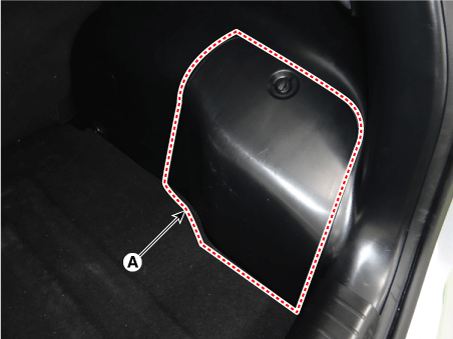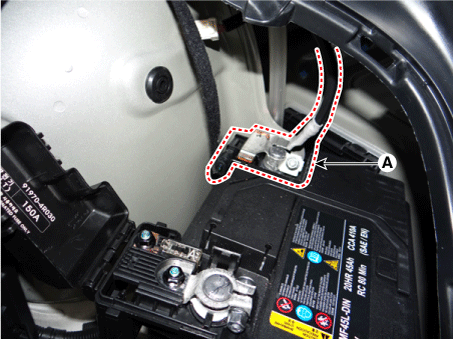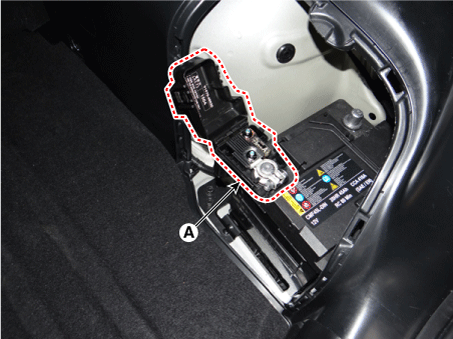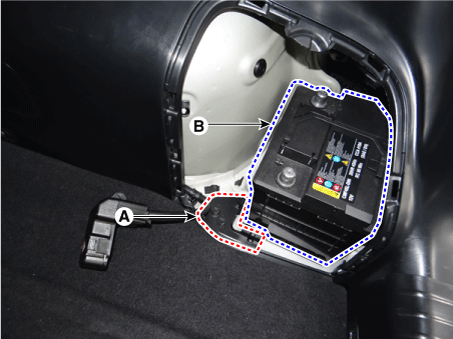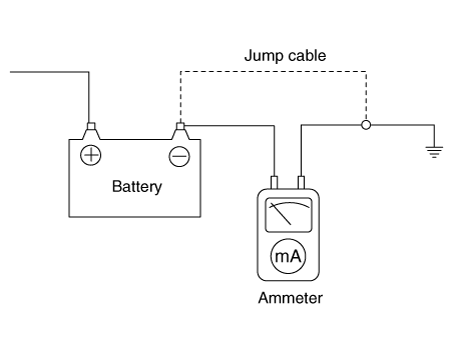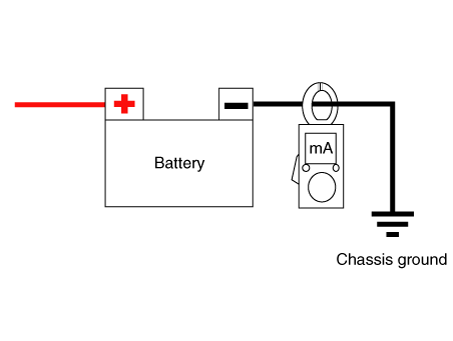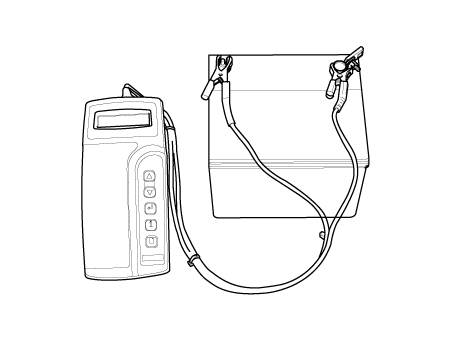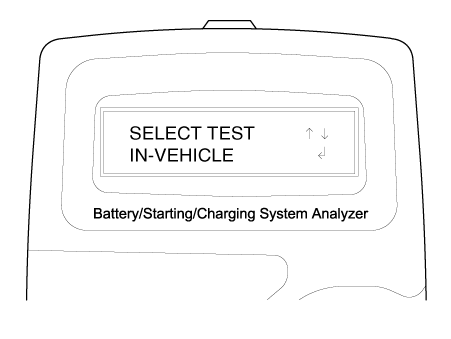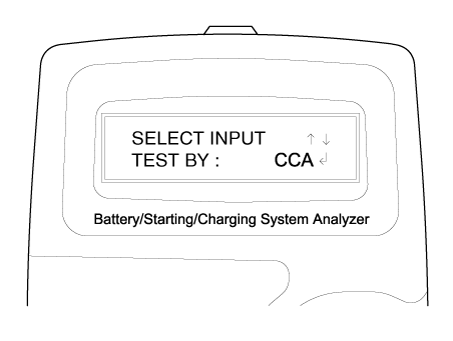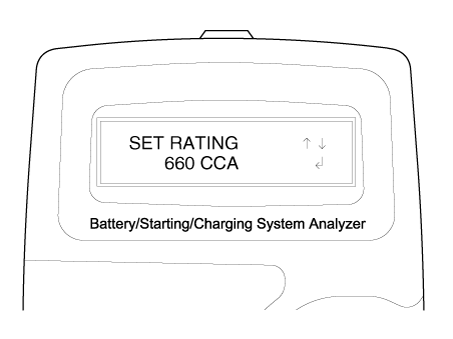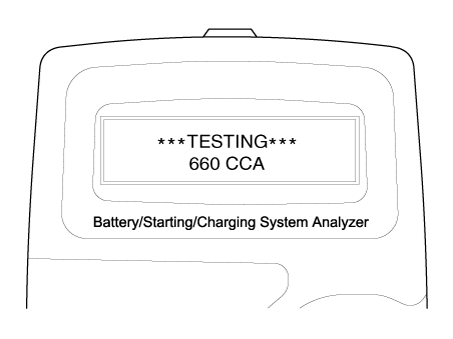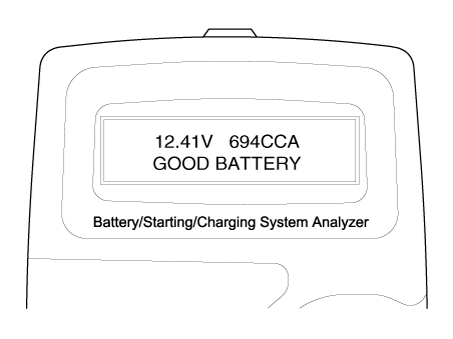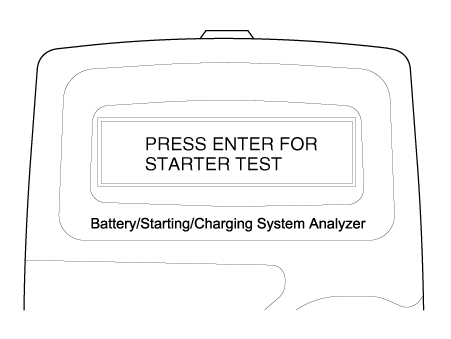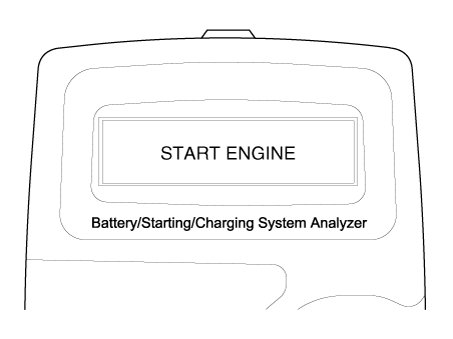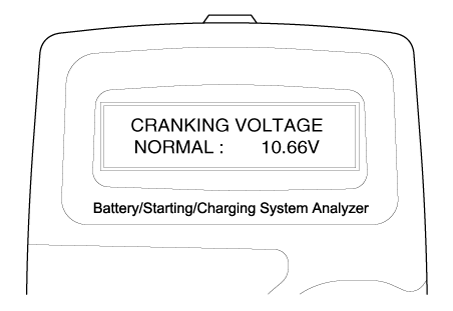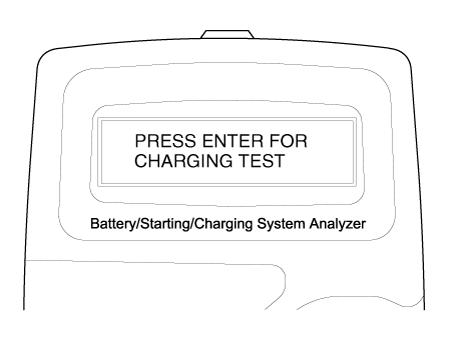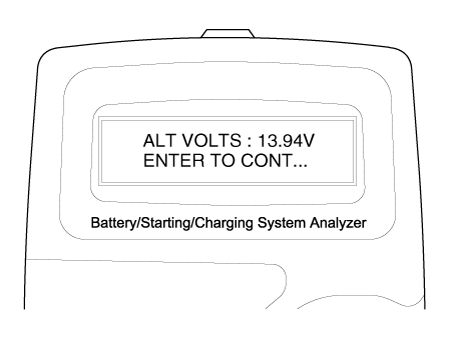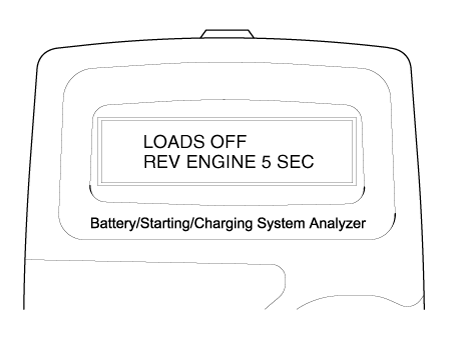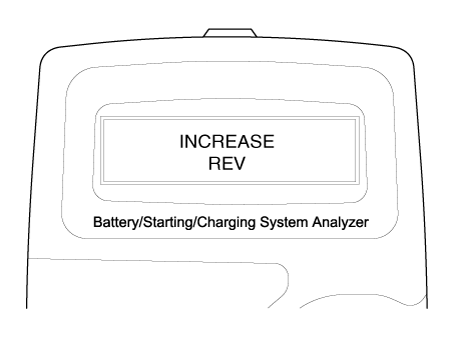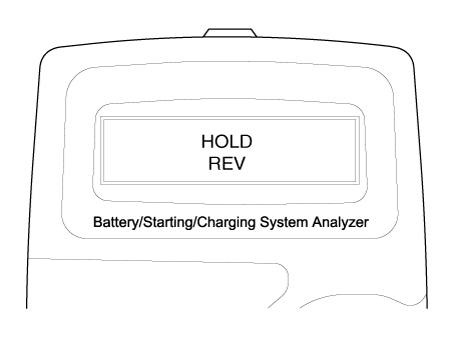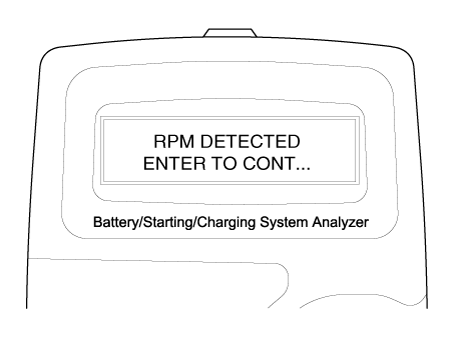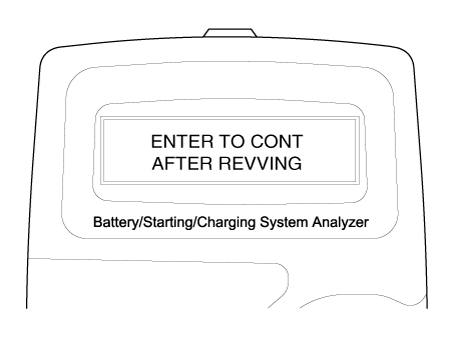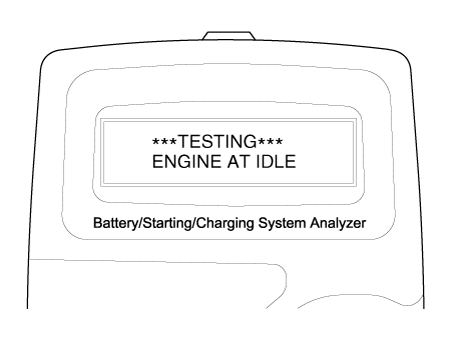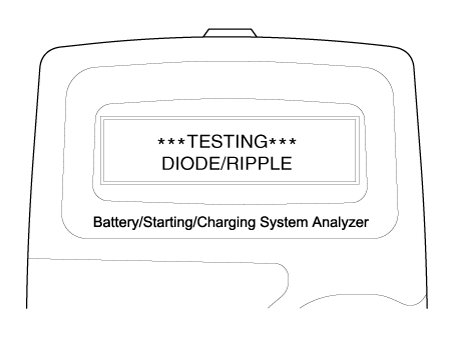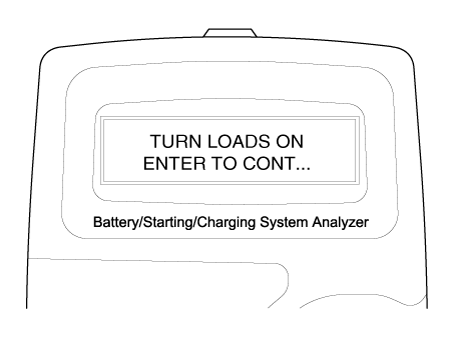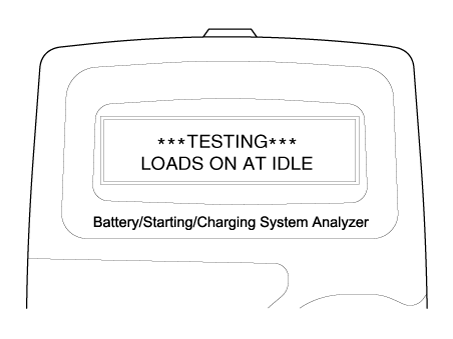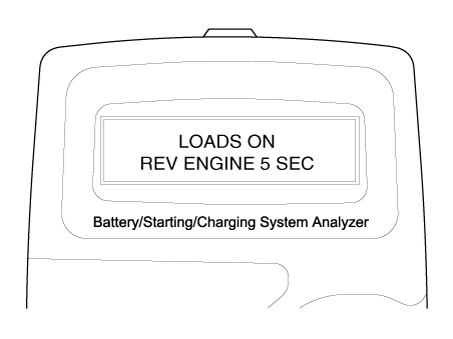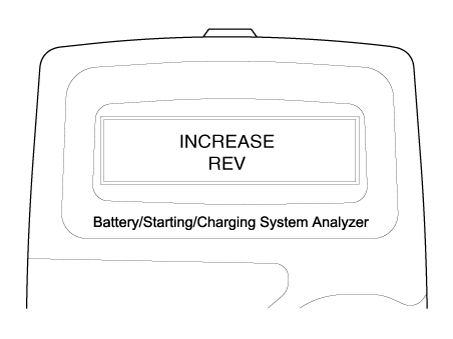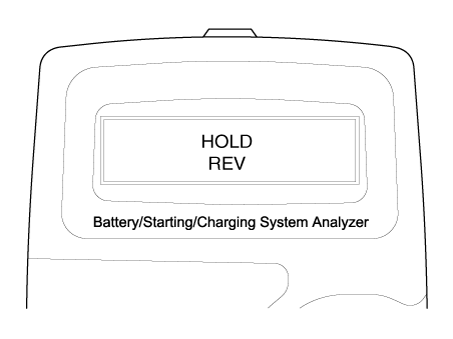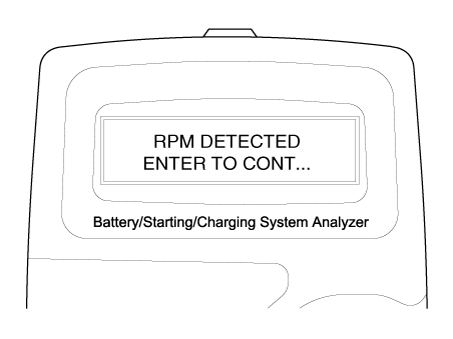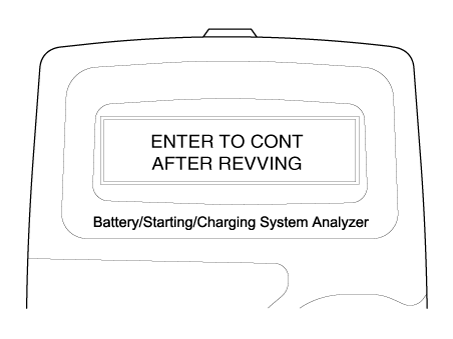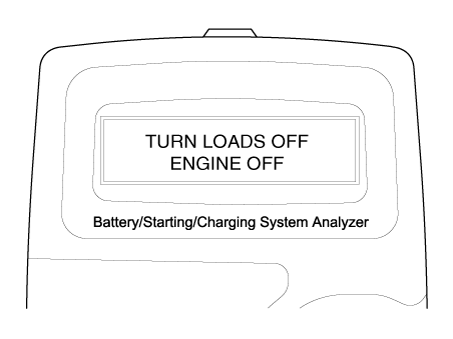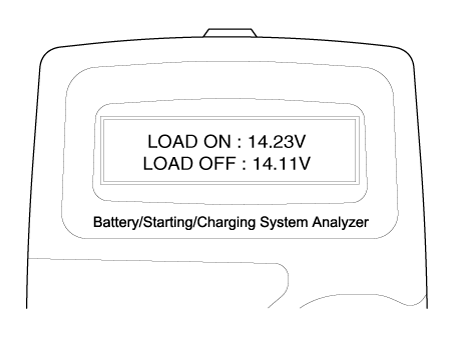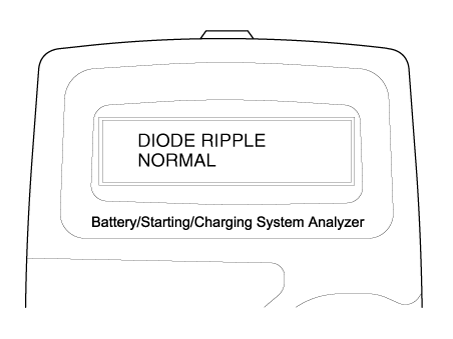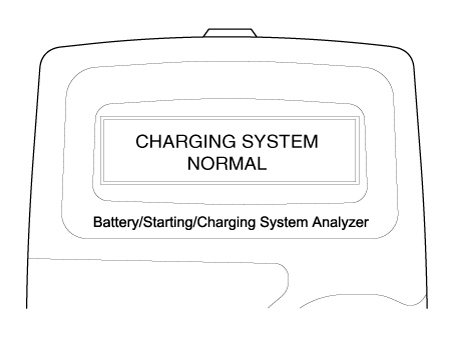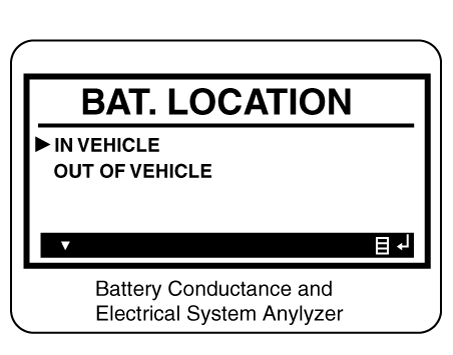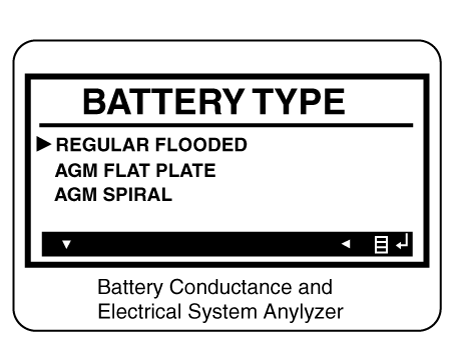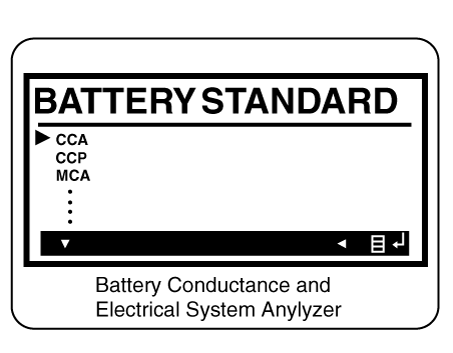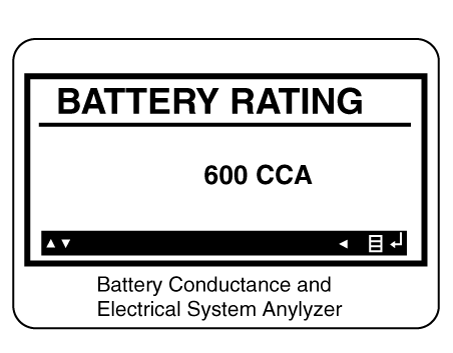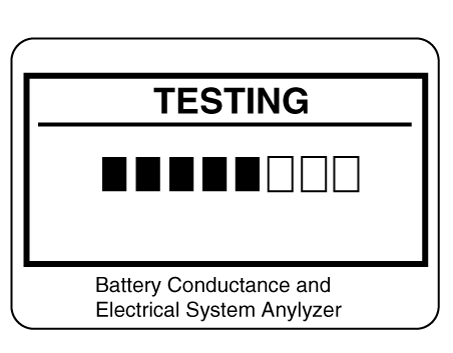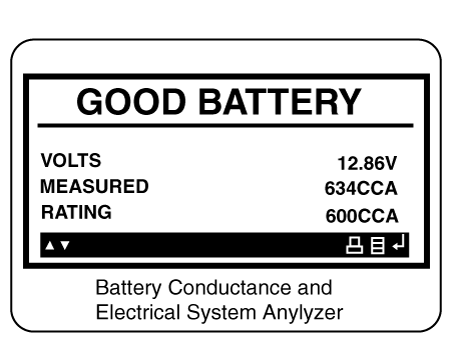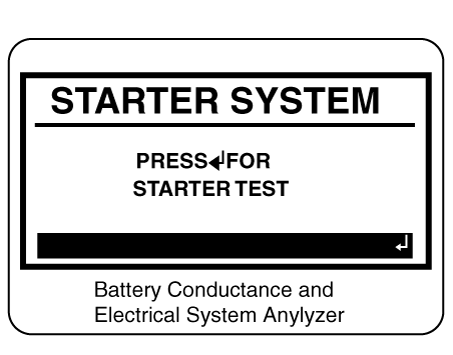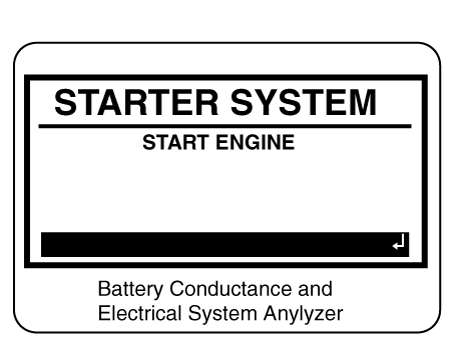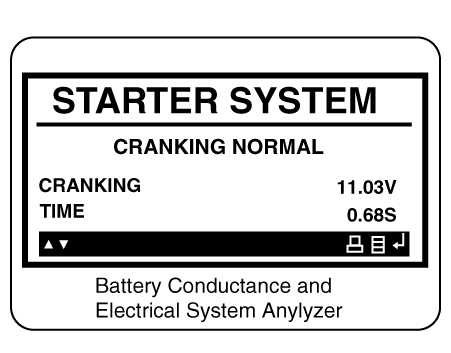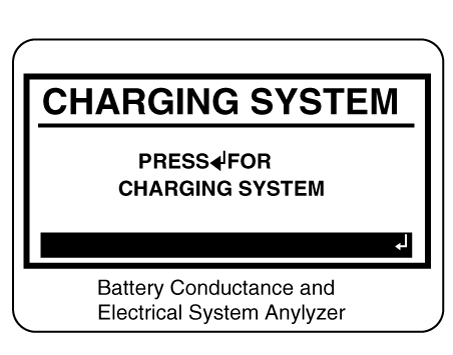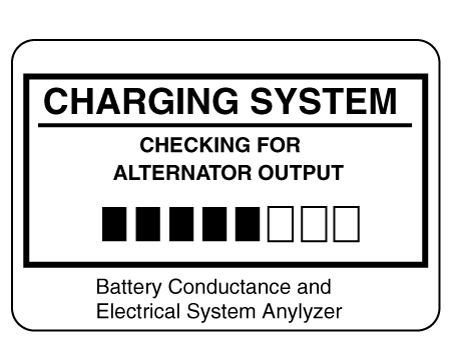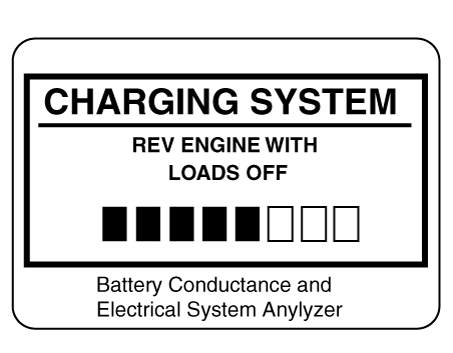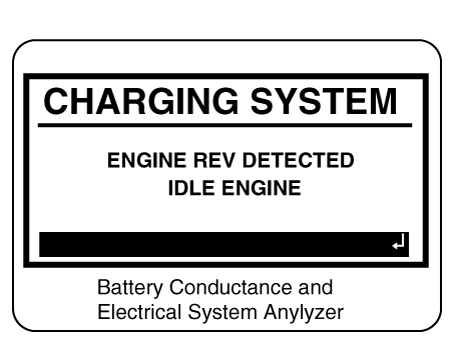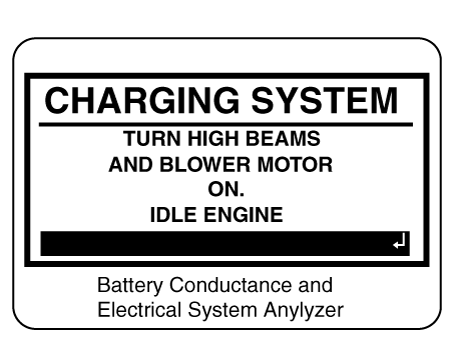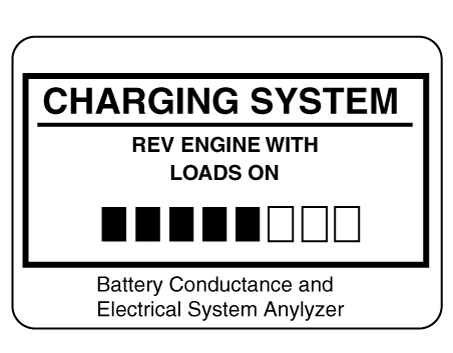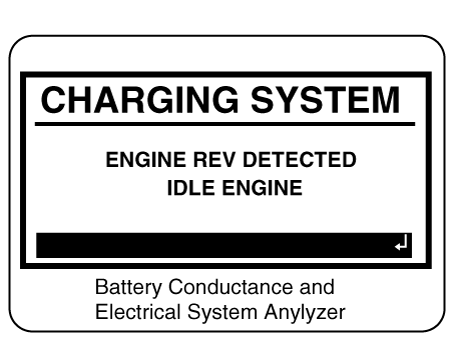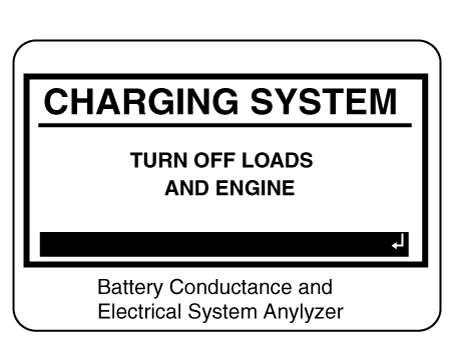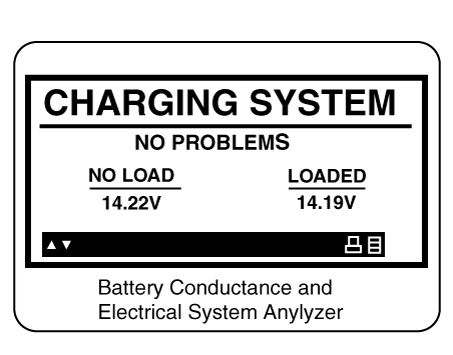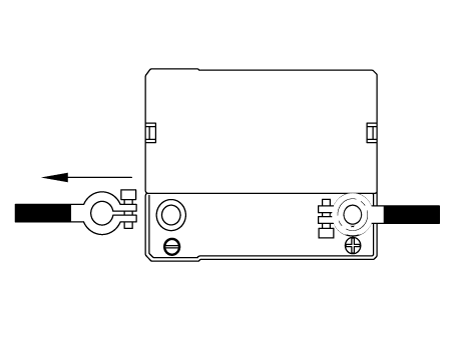Kia Niro: Charging System / Auxiliary 12V Battery Repair procedures
| Removal |
Auxiliary 12V Battery
| 1. |
Open the trunk. |
| 2. |
Remove the luggage side trim [RH] side cover (A).
|
| 3. |
Turn the ignition switch OFF and disconnect the battery negative (-) terminal (A).
|
| 4. |
Disconnect the battery positive (+) terminal (A).
|
| 5. |
Disconnect the vent hose. |
| 6. |
Remove the battery upper bracket (A) after loosening the mounting bolt. |
| 7. |
Remove the auxiliary 12V battery (B).
|
| Inspection |
Battery Voltage and Status
Check the battery voltage and status using the battery tester.
Battery Terminal
| 1. |
Move back and forth to check that the battery terminals (A) are loose or corroded.If the terminals are corroded, clean them.
If battery positive connection is loose, disconnect ground(GND) cable first before attempting to remove or tighten plus connection, to prevent personal injury. |
| 2. |
If the battery clamp on battery positive (+) terminal is not seated securely:
|
| 3. |
If the battery clamp on battery negative (-) terminal is not seated securely:
|
Battery Condition
Check the battery for damage or deformation. If severe damage, deformation or leakage is found, replace the battery.
Vehicle parasitic current inspection
[Using the Ammeter]
| 1. |
Turn the all electric devices OFF, and then turn the ignition switch OFF. |
| 2. |
Close all doors except the engine hood, and then lock all doors.
|
| 3. |
Wait a few minutes until the vehicle’s electrical systems go to sleep mode.
|
| 4. |
Connect an ammeter in series between the battery (-) terminal and the ground cable, and then disconnect the clamp from the battery (-) terminal slowly.
|
| 5. |
Read the current value of the ammeter.
|
[Using the Clamp type Ammeter]
| 1. |
Turn the all electric devices OFF, and then turn the ignition switch OFF. |
| 2. |
Close all doors except the engine hood, and then lock all doors.
|
| 3. |
Wait a few minutes until the vehicle’s electrical systems go to sleep mode.
|
| 4. |
Install the clamp type ammerter on battery negative (-) terminal.
|
| 5. |
Read the current value of the ammeter.
|
| Battery Tester |
| The Micro 570 Analyzer |
The Micro 570 Analyzer provides the ability to test the charging and starting systems, including the battery, starter and alternator.
※ Because of the possibility of personal injury, always use extreme caution and appropriate eye protection when working with batteries. ※ When charging battery by test result, Battery must be fully charged. To get accurate test result, battery surface voltage must have subsided ahead before test when you test battery after charged. (See following Battery Test Results) |
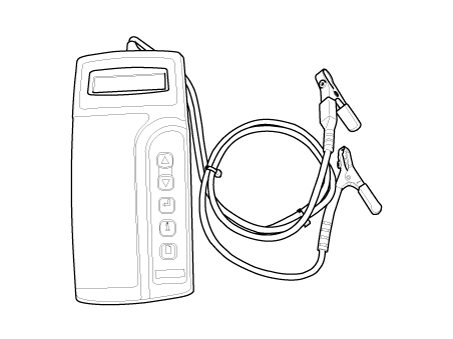
Keypad
The Micro 570 button on the key pad provide the following functions :
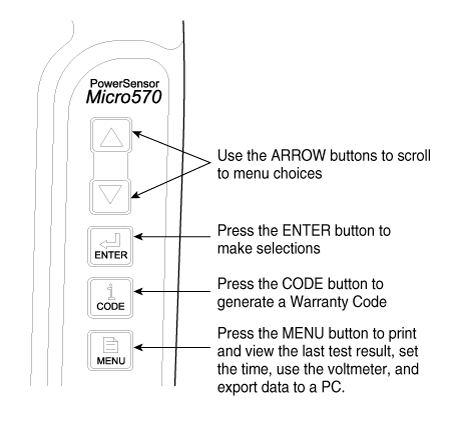
Battery Test Procedure
| 1. |
Connect the tester to the battery.
|
| 2. |
The tester will ask if the battery is connected "IN-VEHICLE" or "OUT-OF-VEHICLE". Make your selection by pressing the arrow buttons; then press ENTER.
|
| 3. |
Select CCA and press the ENTER button.
|
| 4. |
Set the CCA value displayed on the screen to the CCA value marked on the battery label by pressing up and down buttons and press ENTER.
|
| 5. |
The tester will conduct battery test.
|
| 6. |
The tester displays battery test results including voltage and battery ratings. Refer to the following table and take the appropriate action as recommended by the Micro 570.
Battery Test Results
[Charge and Retest method after battery charge] Battery charge Set battery charger to ‘Auto Mode’ (The Mode that charging current drops as the battery charges.) and charge battery until charging current down close to zero or the charger alerts you with an alarm when charge is complete. (Minimum charging time recommended: More than 3 hours with Auto Mode that explained above)
Battery Test after charge Do not test battery right after the charge. Test battery after battery surface voltage has subsided as instructed in the following procedure.
Starter Test Procedure |
| 7. |
After the battery test, press ENTER immediately for the starter test.
|
| 8. |
Start the engine.
|
| 9. |
Cranking voltage and starter test results will be displayed on the screen. Refer to the following table and take the appropriate action as recommended by the Micro 570.
Starter Test Results
Charging System Test Procedure |
| 10. |
Press ENTER to begin charging system test.
|
| 11. |
The tester displays the actual voltage of alternator. Press ENTER to continue.
|
| 12. |
Turn off all electrical load and rev engine for 5 seconds with pressing the accelerator pedal. (Follow the instructions on the screen)
|
| 13. |
The message that engine RPM is detected will be displayed on the screen. Press ENTER to continue.
|
| 14. |
If the engine RPM is not detected, press ENTER after revving engine.
|
| 15. |
The tester will conduct charging system test during loads off.
|
| 16. |
Turn on electrical loads (air conditioner, lamps, audio and etc). Press ENTER to continue.
|
| 17. |
The tester will conduct charging system test during loads on.
|
| 18. |
Rev engine for 5 seconds with pressing the accelerator pedal. (Follow the instructions on the screen)
|
| 19. |
The message that engine RPM is detected will be displayed on the screen. Press ENTER to continue.
|
| 20. |
If the engine RPM is not detected, press ENTER after revving engine.
|
| 21. |
Turn off electrical loads (air conditioner, lamps, audio and etc). Turn the engine off.
|
| 22. |
Charging voltage and charging system test results will be displayed on the screen. Shut off engine end disconnect the tester clamps from the battery. Refer to the following table and take the appropriate action as recommended by the Micro 570.
Charging System Test Results
|
The MDX-670P Analyzer
The MDX-670P battery conductance and electrical system analyzer tests batteries as well as starting and charging systems for vehicle.
It displays the test results in seconds and features a built-in printer to provide a copy of the results.
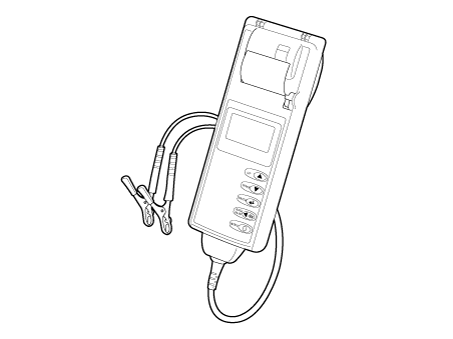
|
When testing the vehicle with old diesel engines, the test result will not be favorable if the glow plug is not heated. Conduct the test after warming up the engine for 5 minutes. |
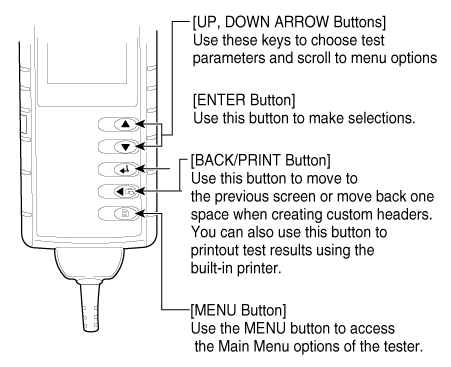
| 1. |
Connect the red clamp to the positive (+) terminal and the black clamp to the negative (–) terminal.
|
| 2. |
Scroll to and select IN VEHICLE or OUT OF VEHICLE for a battery not connected to a vehicle.
|
| 3. |
Scroll to and select REGULAR FLOODED, AGM FLAT PLATE, or AGM SPIRAL where applicable.
|
| 4. |
Scroll to and select the battery’s rating system.
|
| 5. |
Set the selected rating value displayed on the screen to the value marked on the battery label by pressing up and down arrow buttons.
|
| 6. |
Press ENTER to start test.
|
| 7. |
After several seconds the tester displays the decision on the battery’s condition and the measured voltage. The tester also displays your selected battery rating and the rating units.
Battery Test Results
[Charge and Retest method after battery charge] Battery charge Set battery charger to ‘Auto Mode’ (The Mode that charging current drops as the battery charges.) and charge battery until charging current down close to zero or the charger alerts you with an alarm when charge is complete.(Minimum charging time recommended: More than 3 hours with Auto Mode that explained above)
Battery Test after charge Do not test battery right after the charge. Test battery after battery surface voltage has subsided as instructed in the following procedure.
|
| 8. |
Press the ENTER button to proceed with the starter test.
|
| 9. |
Start the engine when prompted.
|
| 10. |
The tester displays the decision on the starter system, cranking voltage, and cranking time in milliseconds.
Starter Test Results
Step 3: Charging System Test |
| 11. |
Press the ENTER button to proceed with the charging test.
|
| 12. |
Rev the engine with loads off. (Following the on-screen prompts)
|
| 13. |
The message that engine RPM is detected will be displayed on the screen, idle the engine.
|
| 14. |
Turn on electrical loads (air conditioner, lamps, audio and etc). Press ENTER to continue.
|
| 15. |
Turn on electrical loads (air conditioner, lamps, audio and etc). Press ENTER to continue.
|
| 16. |
The message that engine RPM is detected will be displayed on the screen, idle the engine.
|
| 17. |
Turn off loads and engine.
|
| 18. |
The Charging System decision is displayed at the end of the procedure.
|
| 19. |
Press the BACK/PRINT button to print the test results or MENU to return to the Options Menu. |
| Installation |
| 1. |
Install in the reverse order of removal.
|
| Cleaning |
| 1. |
Make sure the ignition switch and all accessories are in the OFF position. |
| 2. |
Remove the battery from the vehicle. (Refer to Charging System - "Battery")
|
| 3. |
Inspect the battery tray for damage caused by the loss of electrolyte. If acid damage is present, it will be necessary to clean the area with a solution of clean warm water and baking soda. Scrub the area with a stiff brush and wipe off with a cloth moistened with baking soda and water. |
| 4. |
Clean the top of the battery with the same solution as described above. |
| 5. |
Inspect the battery case and cover for cracks. If cracks are present, the battery must be replaced. |
| 6. |
Clean the battery posts with a suitable battery post tool. |
| 7. |
Clean the inside surface of the terminal clamps with a suitable battery cleaning tool. Replace damaged or frayed cables and broken terminal clamps. |
| 8. |
Install the battery in the vehicle. |
| 9. |
Connect the cable terminals to the battery post, making sure tops of the terminals are flush with the tops of the posts. |
| 10. |
Tighten the terminal nuts securely. |
| 11. |
Coat all connections with light mineral grease after tightening.
|
 Auxiliary 12V Battery Description and operation
Auxiliary 12V Battery Description and operation
Description
1.
The CMF(Closed Maintenance Free) battery is, as the name implies, totally
maintenance free and has no removable battery cell caps.
2.
...
 Battery Sensor Specification
Battery Sensor Specification
Specifications
Item
Specification
Rated Voltage (V)
12 - 14
Quiescent Current (uA)
175
...
Other information:
Kia Niro 2017 (DE HEV) Service Manual: Concentric Slave Cylinder Assembly Repair procedures
Removal
1.
Remove the hybrid motor assembly.
(Refer to Hybrid Motor System - "Hybrid Motor Assembly")
2.
Remove the engine clutch actuator.
(Engine Clutch System - "Engine Clutch Actuator")
3.
...
Kia Niro (DE HEV) Owners Manual: Driving your vehicle
WARNING - ENGINE EXHAUST CAN BE DANGEROUS!
Engine exhaust fumes can be extremely dangerous. If, at any time, you smell exhaust
fumes inside the vehicle, open the windows immediately.
Do not inhale exhaust fumes.
Exhaust fumes contain carbon monoxide, a colorless, odorless gas that can cause ...

